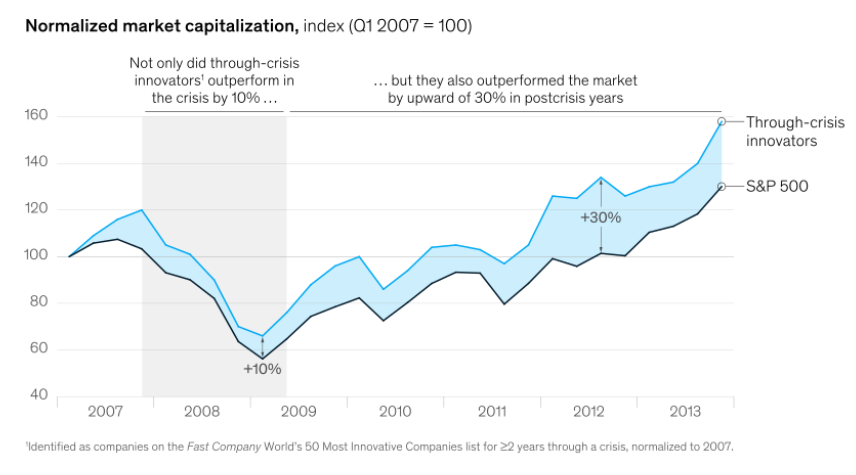
Pandemic, few experts argue, has slowed business growth for many brands. Cloud-native companies that have pivoted their business models have mostly thrived during the constant disruptions. History suggests that organizations that can flex, adapt to unexpected changes and invest in innovation through crisis outperform competition during the recovery. Institutionalizing innovation in workplace is necessary to remain competitive in any industry.
Let’s deep dive into 3 ways innovation in workplace can be institutionalized –
- Foster a culture of innovation and growth
Fostering a culture of innovation in workplace with a highly creative environment and digital transformation is a top-down approach. Leadership is responsible for driving core values and bringing about a company culture that is inclusive and on a high growth path.
When employees feel that their contributions matter and they have scope to experiment, they give their best shot. The expectations are changing and the pandemic has witnessed more employees quit than ever. Experts believe that we’re in “The Great Resignation” and as many as four million people quit in April 2021.
Nurturing a culture of innovation in the workplace means –- Actively encouraging experimentation across teams.
- Enabling rapid development and scaling.
- Observing environment and the market proactively.
- Making the most of technological advancements.
- Failure should not be dreaded
An agile business can only be successful if there is full support from the leadership in removing the fear of failure. Employees don’t want to take risks because they fear failure will negatively impact their reputation, which inhibits growth for both employees and businesses. They need constant confidence and support so they can fail quickly, learn from mistakes and move on.
An organization that punishes failure and preaches innovation is a phony organization, to say the least. Fearless action is only driven by the lack of fear. Not every path is straight or successful, and not every idea will be worth investing time into. Perhaps 1 out of 10 ideas will actually make sense. What’s important is to understand that failure does not equal wasted effort. The workplace that rewards failure supports a high growth and innovation culture. - Operational agility is not a choice
Operational agility is an essential component of any competitive business model and is the ability to quickly and effectively respond to changes within a company. The 3 key pillars of operational agility are flexibility, robustness, and resilience. Agility is what allowed the leading companies to stand apart during the pandemic.
Practicing agility at the top sets the culture for teams and employees; leaders who can act quickly, pivot when needed, and scale with stakeholders help organizations to rise above adversity. Gartner estimates that by 2025, over 50% of government agencies will have modernized critical core legacy applications to improve resilience and agility. This goes on to say not just private firms, govt agencies have also felt the need to be agile in order to be sustainable.
Wrapping Up
Identifying risks and predicting disruptions is not a gut feeling. It requires a comprehensive understanding of the entire value chain: technologies, digital transformation, processes, environment, and customers. The leading organizations today are building new levels of resiliency, institutionalizing innovation in the hybrid workplaces, and aren’t just dealing with the challenges of today. Rather, they have established an innovation culture that embraces changes that are yet to come.


